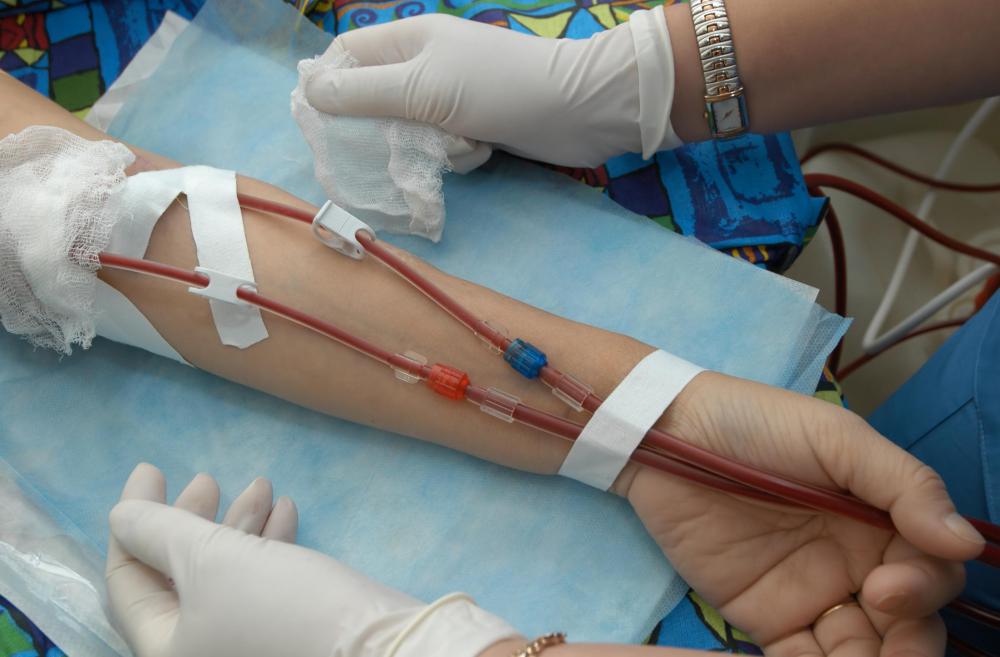At WiseGEEK, we're committed to delivering accurate, trustworthy information. Our expert-authored content is rigorously fact-checked and sourced from credible authorities. Discover how we uphold the highest standards in providing you with reliable knowledge.
What Are the Different Types of Emergency Medicine Procedures?
There are many different types of emergency medicine procedures that doctors and emergency response teams must know. Cardiopulmonary resuscitation, or CPR, is a staple of first aid and can be mastered by just about anyone with some training. Intravenous therapy and electrocardiogram, or EKG, testing are also commonly used emergency procedures. Airway management and suturing are likewise essential, life-saving practices used in emergency situations.
Cardiopulmonary resuscitation, or CPR, is one of the most commonly known emergency medicine procedures and should be done when a person is thought to be in cardiac arrest, meaning that the heart has stopped pumping blood. It involves rescue breathing and chest compressions, which serve to manually pump the blood through the heart until normal heart function can be restored. Ventricular fibrillation, a type of abnormal heart rhythm, is one of the most common causes of cardiac arrest. Defibrillation delivers a shock to the heart, which restores normal heart rhythm.

Intravenous therapy is also among the essential emergency medicine procedures. This procedure literally translates to "into the vein", meaning that it is a needle attached to a tube that is inserted directly into a vein. One of the most common emergency uses for this procedure is to correct electrolyte imbalances and replace fluids in cases of dehydration. Intravenous therapy may also be used during emergency blood transfusions or to quickly deliver medications. This form of therapy is very helpful in emergency situations because it is the fastest way to deliver fluids to the body.

An electrocardiogram assists in detecting problems with the electrical activity in the heart. The electrocardiogram is often called an EKG or ECG test and translates electrical activity, which is responsible for pumping blood through the heart, onto a sheet of paper. This test is especially useful when symptoms of heart disease are present, such as chest pain, shortness of breath, or heart palpitations. A trained eye can look at the results of an EKG test and determine possible causes of the symptoms.

Proper airway management numbers itself as another vital emergency medicine procedure, enabling proper airway management. One of the fundamental functions of the body is the processing of oxygen through the lungs and heart. When an airway is blocked, it qualifies as an emergency situation, as mere minutes without oxygen can be fatal. The first thing an emergency response team will do in the case of airway blockage is to assess the situation to determine what is causing the blockage. The treatment will depend on what is causing the obstruction, but may include repositioning of the head, bag-valve-mask ventilation, or intubation.

Suturing is one of the oldest essential emergency medicine procedures, having existed for thousands of years in order to close wounds. Deep cuts can result in bleeding to death if not properly taken care of. The primary purpose of the suture is to close the wound to minimize bleeding and infection. The wound is closed in a way that allows the skin to heal quickly and neatly with minimal scarring.
AS FEATURED ON:
AS FEATURED ON:














Discuss this Article
Post your comments